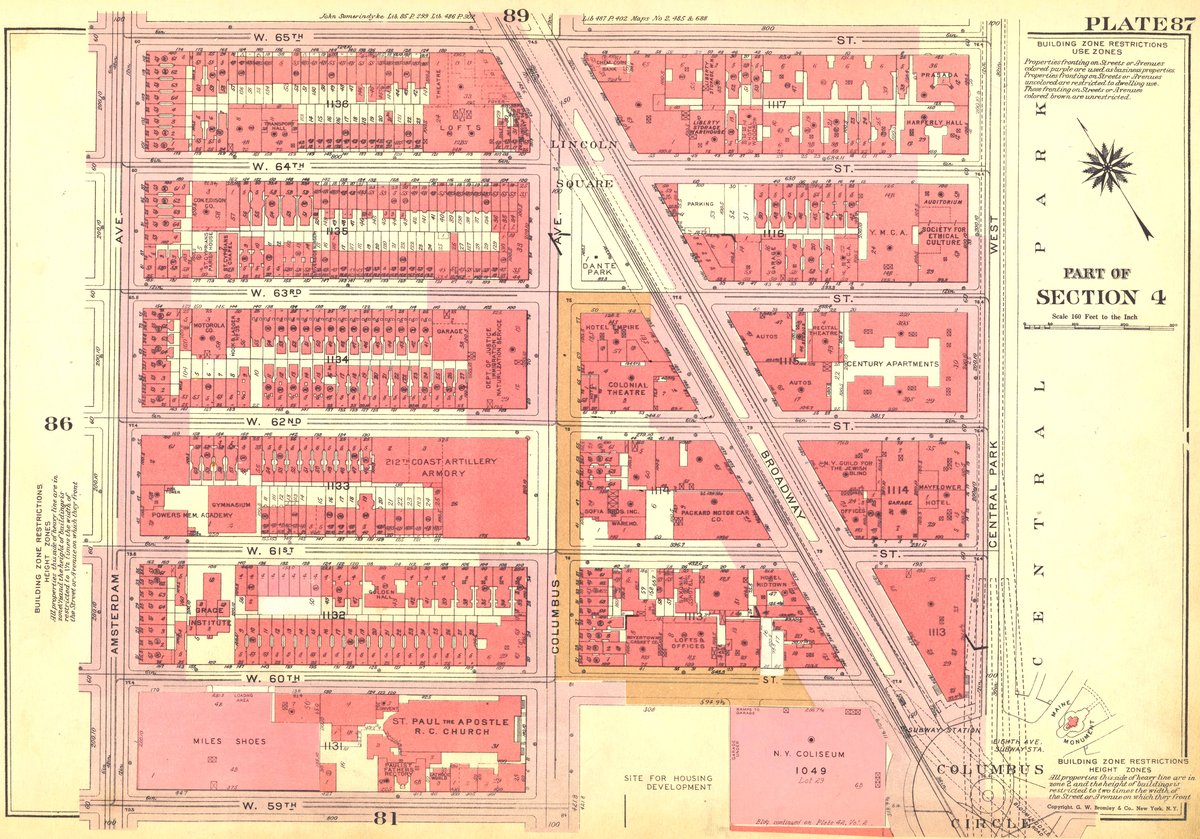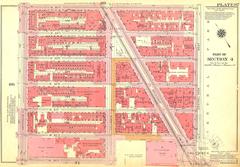
St. Paul the Apostle Church, New York City: Visiting Hours, Tickets, and Historical Significance
Date: 15/06/2025
Introduction
St. Paul the Apostle Church, located in the heart of Manhattan’s Upper West Side, stands as a monument to faith, art, and community. Founded in 1858 as the mother church of the Paulist Fathers—the first Roman Catholic community established in the United States—this remarkable edifice embodies the spiritual and cultural evolution of New York City. Father Isaac Hecker, its visionary founder, aspired to create a space that would unite the majesty of European ecclesiastical architecture with American creativity and innovation. The result, brought to life by renowned architects and artists such as Jeremiah O’Rourke, John La Farge, Augustus Saint-Gaudens, and Stanford White, is a church that continues to inspire visitors through its architectural grandeur, stunning artworks, and dynamic ministry.
More than a historical landmark, St. Paul the Apostle Church is a vibrant hub for worship, cultural engagement, and outreach. It welcomes a diverse congregation—including young professionals, university students, and the LGBTQ+ community—while also serving as a center for music, art, and social justice initiatives. This comprehensive guide offers essential information for planning your visit, exploring the church’s history, architecture, visiting hours, ticketing, and nearby attractions (St. Paul the Apostle Parish History; St. Paul the Apostle: Our Mission; HDC).
Table of Contents
- Introduction
- Founding and Historical Legacy
- Architectural and Artistic Significance
- Community and Cultural Impact
- Liturgical Life and Ministries
- Visitor Information
- Nearby Attractions
- Practical Information and Amenities
- Frequently Asked Questions (FAQ)
- Conclusion and Call to Action
- References
Founding and Historical Legacy
St. Paul the Apostle Church was established in 1858 as the mother church of the Paulist Fathers, an American-founded Roman Catholic community. Father Isaac Hecker, a convert to Catholicism and the Paulists’ founder, envisioned a church that would serve as a beacon for both spiritual seekers and the broader community (St. Paul the Apostle Parish History). Construction began with the laying of the cornerstone in 1876, and the church was completed in 1885, combining the ingenuity of Father Hecker and architect Jeremiah O’Rourke. Subsequent enhancements were overseen by Father George Deshon, a West Point–trained engineer and early Paulist.
The church’s history is deeply intertwined with the growth and transformation of New York City, especially as waves of immigrants shaped the city’s character. St. Paul the Apostle provided not only religious services but also education, outreach, and a sense of belonging for new arrivals.
Architectural and Artistic Significance
Exterior and Structure
Designed in the Medieval Revival style, St. Paul the Apostle Church combines Romanesque and Gothic elements. The granite used in its construction was sourced from notable New York City structures, including the Croton Aqueduct and Reservoir, giving the building a tangible connection to the city’s past (St. Paul’s Art & Architecture). The imposing twin towers and fortress-like façade set it apart from its urban surroundings.
Façade and Towers
The façade features two massive towers flanking the main entrance. Above the portals, a marble and mosaic bas-relief by Lumen Martin Winter, installed in 1959 for the centenary, depicts the Conversion of St. Paul, symbolizing the church’s namesake and mission (St. Paul’s Art & Architecture).
Interior and Nave
Upon entering, visitors find a soaring nave with side aisles and chapels. The sanctuary, elevated and marked by a monumental high altar designed by Stanford White, is a focal point of the interior (St. Paul’s Art & Architecture).
Side Chapels and Shrines
The church features several side chapels, each dedicated to different saints and adorned with significant works of art by Augustus Saint-Gaudens, Frederick MacMonnies, and others. These chapels offer quiet spaces for prayer and reflection.
Stained Glass, Murals, and Sculpture
Stained glass windows by John La Farge bathe the interior in vibrant light, while murals and mosaics by artists such as Robert Reid and Bertram Goodhue add depth and narrative to the space (St. Paul’s Art & Architecture). Noteworthy sculptures include the bronze crucifix near the high altar and a marble baptistry at the entrance.
Notable Artists and Designers
- Jeremiah O’Rourke: Principal architect
- Stanford White: High altar and interior elements
- John La Farge: Stained glass and marble baptistry
- Augustus Saint-Gaudens and Frederick MacMonnies: Sculpture
- Bertram Goodhue: Floor mosaics
- Lumen Martin Winter: Façade relief
Materials and Construction
The church’s steel frame and rock-faced granite exterior were innovative for their time. Salvaged materials from city landmarks add historical resonance (HDC).
Lighting and Atmosphere
Natural light through stained glass creates a dynamic interior atmosphere. Evening lighting highlights the church’s architectural and artistic features.
Community and Cultural Impact
St. Paul the Apostle Church is a center for spiritual life, cultural events, and social outreach. Ministries serve diverse groups, including young adults, students, and the LGBTQ+ community (St. Paul the Apostle: Our Mission). The church hosts concerts, art exhibits, food pantries, and supports international aid projects. Its bookstore, open since 1978, offers religious literature and gifts (St. Paul Bookstore: About).
Liturgical Life and Ministries
Daily Mass, confessions, and special liturgies anchor the church’s spiritual life. The music ministry features the renowned Möller pipe organ and professional choirs. The parish is active in social justice, youth ministry, and interfaith dialogue (The Good Newsroom: Mass for Creation).
Visitor Information
Visiting Hours and Admission
- Monday–Friday: 7:00 AM – 7:00 PM
- Saturday: 8:00 AM – 6:00 PM
- Sunday: 7:00 AM – 8:00 PM
Entry is free; donations are welcomed to support the church and its programs. Visiting hours may vary on holidays or for special events—check the official website for updates.
Tickets and Entry
No tickets are required for general visits, Mass, or prayer. Special concerts or events may require advance registration.
Accessibility
The church is wheelchair accessible, with ramps and accessible restrooms. Service animals are permitted. Contact the parish office for further accommodations.
Guided Tours and Events
Guided and self-guided tours are available by appointment. Informational pamphlets are provided at the entrance. The church frequently hosts concerts and community events (St. Paul’s NYC).
Photography Policies
Photography is permitted, but visitors should avoid using flash and remain discreet, especially during services.
Travel Tips
- The church is near Columbus Circle and accessible by subway (A, B, C, D, 1 trains) and several bus routes.
- Arrive early for Masses or popular events.
- Modest attire is recommended.
Nearby Attractions
St. Paul the Apostle Church is within walking distance of Central Park, Lincoln Center, the Museum of Arts and Design, and Time Warner Center, making it an ideal stop on a Manhattan cultural itinerary (The Catholic Travel Guide).
Practical Information and Amenities
- Restrooms: Available on-site.
- Bookstore and Gift Shop: Open during church hours.
- Safety: The area is generally safe, but standard urban precautions are advised.
- Events Calendar: Check the official website for current Mass times and events.
Frequently Asked Questions (FAQ)
Q: What are the church’s visiting hours?
A: Monday–Friday: 7:00 AM–7:00 PM, Saturday: 8:00 AM–6:00 PM, Sunday: 7:00 AM–8:00 PM. Check the website for updates.
Q: Is there an entry fee or ticket required?
A: Entry is free; no tickets are required. Donations are appreciated.
Q: Are guided tours available?
A: Yes, by appointment through the parish office.
Q: Is the church wheelchair accessible?
A: Yes, with ramps and accessible restrooms.
Q: Is photography allowed?
A: Yes, but please be discreet and avoid flash during services.
Conclusion and Call to Action
St. Paul the Apostle Church is not just a stunning architectural gem; it’s a vibrant center of faith, music, art, and community engagement in New York City. Whether you are attending Mass, exploring its rich artistic heritage, or participating in social outreach, a visit to this church offers spiritual enrichment and a unique cultural experience.
Before visiting, consult the official website for the latest information on hours and events. For guided tours, event updates, and exclusive content, download the Audiala app and follow St. Paul the Apostle Church on social media. Experience this landmark for yourself and discover its enduring role in New York City’s historical and spiritual landscape.























































































































































































































































































